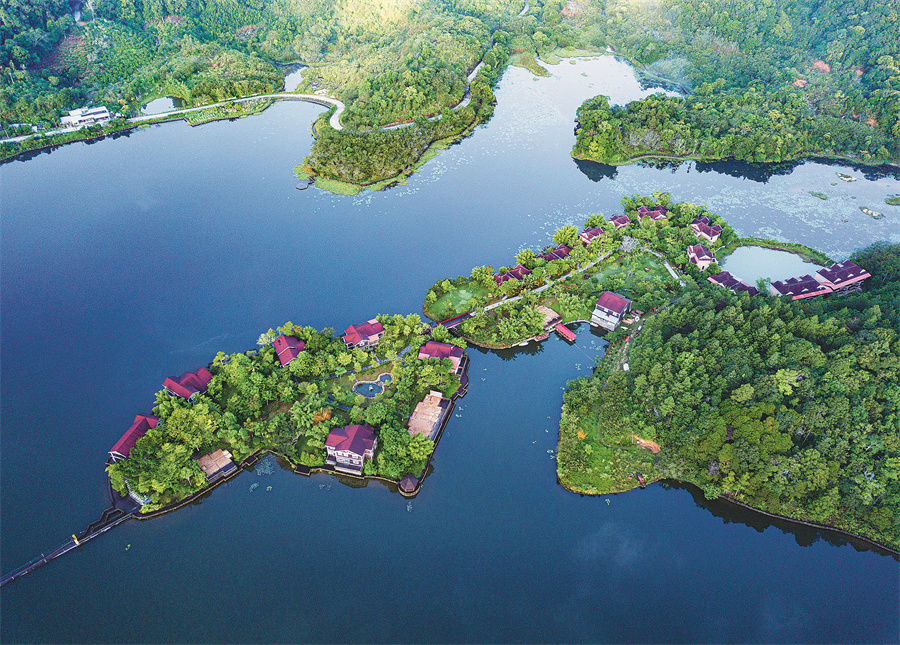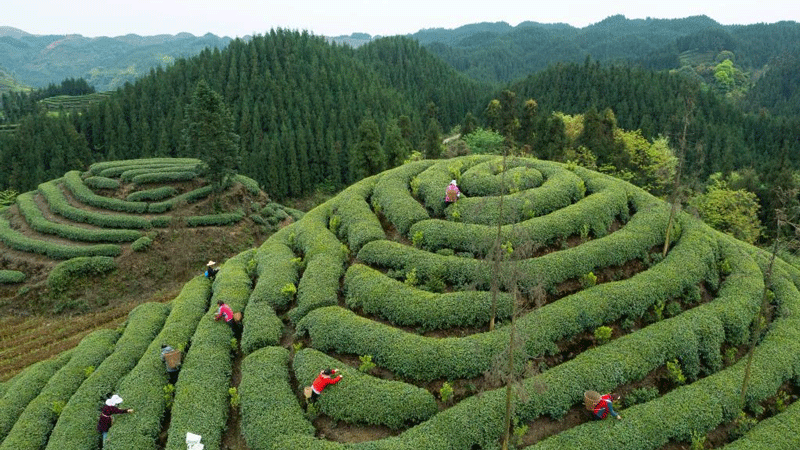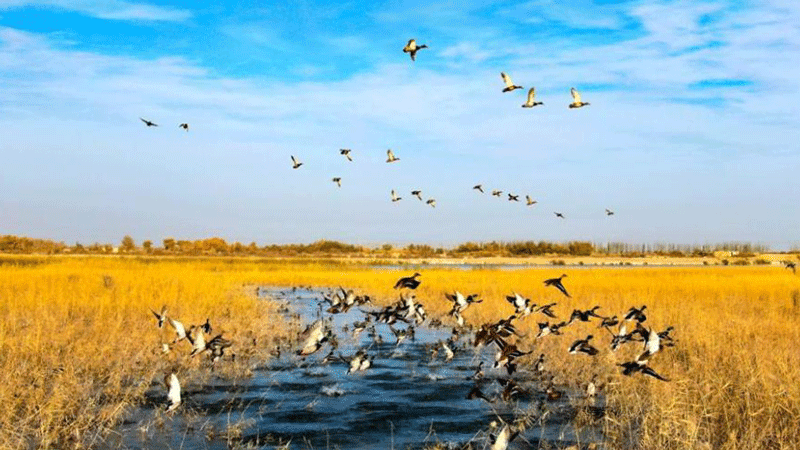Hainan sows seed of better biodiversity protection

A view of Jiangfengling Tianchi Lake in the Hainan Tropical Rainforest National Park, Hainan province. PU XIAOXU/XINHUA
China's most southerly province is one of the front-runners in the nation's new nature parks system. Hou Liqiang reports.
Editor's note: In the coming weeks, China Daily will be publishing special reports focusing on the ongoing development of the country's national parks system, looking at areas coming under stronger protection and the species benefiting from the new facilities.
Transportation used to be a big headache for residents of Gaofeng, a remote village in the densely vegetated rainforest of Hainan, China's most southerly province.
"In 2020, a seriously ill villager waited more than two hours till the ambulance his family had called finally arrived," recalled former resident Fu Guohua.
The mountain-encompassed settlement is about 62 kilometers from the urban area of Baisha Li autonomous county, which can only be reached via steep, rugged roads.
Along with the 497 other residents of the village, Fu, 57, has said farewell to the transportation headache as construction continues of the Hainan Tropical Rainforest National Park, whose core protection area surrounds the village.
In a move to reduce human activity and improve conservation efforts in the park, the residents have been moved to a new village — also called Gaofeng — about 3 km from Baisha, the county seat.
Previously, the area covered by the park fell under the jurisdiction of 19 independent protected zones. Despite their role in protecting separate areas, the low-lying areas between them that boast more species than any other part of the tropical forest were unprotected.
Following a long period of human activity, a large swath of tropical and monsoon forest in these areas vanished, fragmenting the ecosystem and separating habitats.
Since the residents were relocated from the core areas and human activity was greatly restricted, the tropical rainforests have been put on a self-healing track, helped by several remedial measures.

A dragonfly (coeliccia cyanomelas) lands on a leaf in the park. YANG GUANYU/XINHUA
Win-win situation
Fu said the community's relocation is a win-win for both the residents and the rainforest.
In addition to poor access to medical services, the lack of transportation in the old village caused great difficulties for school students, he said. Once they reached the third grade, the children had to either travel 40 km to the nearest township or the county city, as the primary school could only teach those in the first and second grades. He said it was hard to make money in such an isolated area, and the only source of income was the cultivation of rice and rubber trees. The poor economic conditions also made women from outside reluctant to marry local men.
However, he said all those problems have been addressed since the relocation as every family was given a free two-story, four-bedroom house and each villager was allocated 0.7 hectares of rubber trees.
As the villagers embraced their new lives, their original homes were demolished and the area returned to tropical rainforest. "I was happy to move. It's not only good for future generations, but will also help protect the rainforest," Fu said.
Such forests only cover about 6 percent of the Earth's land surface, but they are of great importance to the conservation of biodiversity as they are home to 80 percent of the planet's known species. China hosts just 0.2 percent of the world's tropical rainforests, with those in Hainan being the most concentrated and best-preserved. They account for one-third of all rainforests in China.
In light of that, it was little wonder that when China announced the establishment of its first five national parks last year, in a move designed to bolster the conservation of biodiversity, one of the facilities was the tropical rainforest park in Hainan.
In October last year, when he addressed the Leaders' Summit of the 15th Meeting of the Conference of the Parties to the Convention on Biological Diversity, President Xi Jinping announced that China had officially designated its first group of five national parks — including the Three-River-Source National Park, the Giant Panda National Park, the Northeast China Tiger and Leopard National Park and the Wuyishan National Park.
With a total protected area of 230,000 sq km, the parks are home to nearly 30 percent of the key terrestrial wildlife species found in China, he said.
"To strengthen biodiversity protection, China is moving faster to establish a system of protected areas, with national parks as the mainstay," Xi said. "Over time, areas of the greatest importance to the natural ecosystem, with the most spectacular natural landscapes, the most valuable natural heritage and the greatest biodiversity reserves will be included in the national park system."

Visitors take photos in the park in May. YANG GUANYU/XINHUA
Strategic significance
In April, when he visited the Hainan Tropical Rainforest National Park, Xi highlighted the need to fully understand the significance of the facility's development and urged continuous efforts in this regard.
Launched as one of the country's first 10 pilot national parks in 2015, the Hainan facility covers 4,400 sq km, about 14 percent of the island's surface area, with virgin forest covering about 95 percent of the virgin forest of the island.
As one of 34 global biodiversity hot spots, the park is home to 3,653 species of wild vascular plants, accounting for 11.7 percent of the total in China.
It also includes the only habitat for Hainan gibbons, the world's most critically endangered primate.
According to the planning for the park, unveiled by the National Park Administration and the Hainan government in 2020, there were 1,885 residents in the core protection area of almost 2,749 sq km.
In March 2020, the Hainan government arranged to move all the residents out of the core area by the end of this year. All the buildings and facilities there will be demolished and returned to tropical rainforest.
Before Fu was relocated in 2020, 142 residents of his old village, situated on Yinggeling Mountain, had been relocated in 2017. Now, as a rainforest conservation ranger employed by the local government, he has seen encouraging changes in the area formerly covered by homes.
Vegetation now covers the entire area. "It is so beautiful. I didn't find the mountains of my hometown so beautiful when I lived there," he said.
Wild animals are frequently sighted in the area, according to Hainan Daily, quoting a media release from the Yinggeling Bureau of the Hainan Tropical Rainforest National Park Administration.
"After allowing nature to restore itself, we will also facilitate the area's restoration with some remedial measures, hoping that the conservation function of the area's ecosystem can be restored and wild animals will be attracted back," the release said.

Mist covers the summit area of Yinggeling Mountain in the park's core area. PU XIAOXU/XINHUA
Intelligent monitoring
As residents move out, an intelligent monitoring system has been set up to help restrict human activity and improve park management.
Last year, the park's administration started building an all-weather electric fence that uses infrared cameras, intelligent cameras and fiberoptic vibration sensors, said He Cong, an official with the administration. He told China News Service that the fence is expected to enclose the entire park in five years.
Intelligent cameras can automatically alert rangers when they detect unauthorized vehicles and people, while the vibration sensors can note the location of any intruders based on differences in the frequency of vibration in the treads of animals and humans, according to CNS.
Restricted by internet availability, infrared cameras are currently only placed in the range of activities of a group of gibbons known as "C".
As technology develops, the administration may consider introducing panoramic cameras and human-piloted drones capable of flying through the forest, among other equipment, he said.
In addition to sparing rangers the need for field patrols, the facilities together will comprehensively deepen the administration's ability to monitor and protect the park, he said.
Photos
Related Stories
- China to enhance prevention, control of invasive alien species
- Blood pheasants spotted in Qinghai
- Chinese delegate calls on parties to seek compromise at upcoming UN biodiversity conference
- China enhances efforts to promote biodiversity conservation
- 1 mln hectares of afforestation completed along Yangtze River Economic Belt
- Former fishermen embrace new role as guardians of Yangtze
Copyright © 2022 People's Daily Online. All Rights Reserved.









